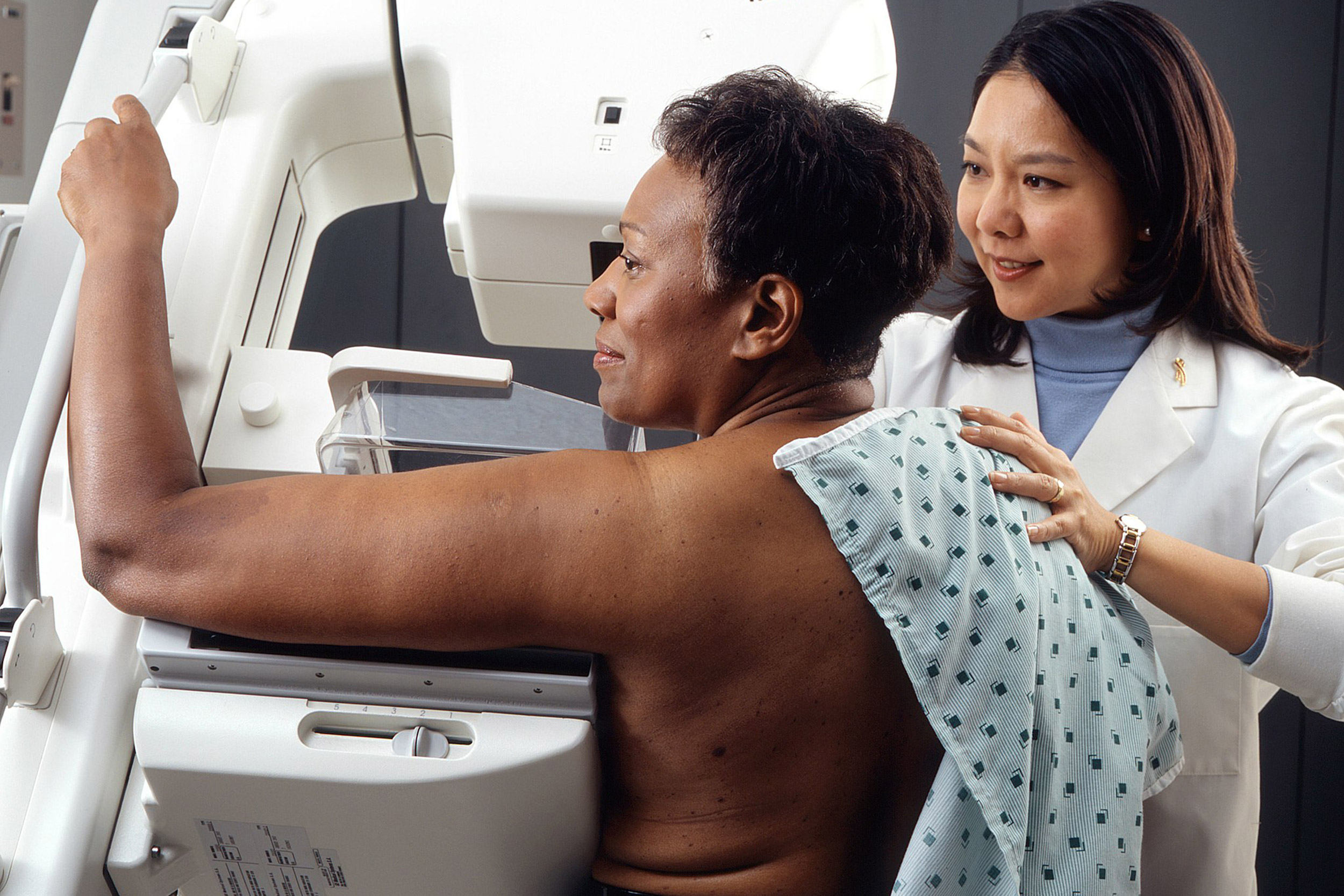
A new analysis from a team of MGH investigators urges the development of guidelines that account for racial differences in the development and aggressiveness of breast cancer.
Photo by Rhoda Baer/National Cancer Institute
Race bias seen in breast-cancer screening
Current guidelines can delay diagnosis in nonwhite women, analysis says
The current guidelines for mammographic breast-cancer screening, which are based on data from primarily white populations, may lead to delayed diagnosis in nonwhite women, according to a new report published in JAMA Surgery.
An analysis by a team of Massachusetts General Hospital investigators found that racial differences in patients’ ages and tumor stages at the time of diagnosis support the development of guidelines calling for earlier initial screening of some nonwhite women.
“While a lot of attention has been focused on improving the ‘cultural competency’ of clinical care — caring for patients in ways that accommodate their cultural and language differences — we are concerned that we haven’t paid as much attention to the scientific research process,” said David Chang of the MGH Department of Surgery. “If the science upon which clinical guidelines are based was not done in a way that respects racial differences, there is little that can be done at the point of delivery to improve patient care.”
Current guidelines from the U.S. Preventive Services Task Force recommend beginning breast-cancer screening at age 50 for women at average risk. Chang and his colleagues set out to investigate whether applying a single guideline to a racially diverse population of women might lead to under-screening of nonwhite patients, resulting in later diagnosis. To do this, they analyzed data from the Surveillance, Epidemiology, and End Results database of the National Cancer Institute covering women ages 40‒75 who were diagnosed with breast cancer during the years 1973‒2010.
The researchers found that while the average age at diagnosis was 59 for white women, it was 56 for black women, 55 for Hispanic women, and 46 for Asian women.
The researchers found that while the average age at diagnosis was 59 for white women, it was 56 for black women, 55 for Hispanic women, and 46 for Asian women. Higher percentages of nonwhite women were diagnosed before age 50 — 31 percent of blacks, 35 percent of Hispanics, and 33 percent of Asian women — compared with 24 percent of white patients. Higher percentages of black and Hispanic patients — 47 and 43 percent, respectively — were diagnosed with advanced cancers, compared with 37 percent of white patients and 36 percent of Asian patients.
Advances in screening technologies and clinical practice could reduce the risks of overdiagnosis and overtreatment, the researchers say. Earlier screening would apply only to nonwhite women, and the cost savings that may result from improved outcomes in minority patients whose cancer is detected earlier could mitigate the costs of additional screenings, they added.
“The situation with breast cancer is one of the best examples of how science done without regard to racial differences can produce guidelines that would be ultimately harmful to minority patients,” said Chang, an associate professor of surgery at Harvard Medical School. “There have been similar efforts in recent years to combat gender biases in science, as we now appreciate that studies conducted only on males — even basic research in rats or other animals — may not apply to, or may even harm, female patients. In one instance, it was discovered that dosage instructions for a particular sleeping pill were too strong for women, leading to auto accidents and eventually to a change in dosage guidelines.
“Flawed science can harm more people than flawed clinical care, which is why it is so important to detect and eventually eliminate these sorts of hidden biases in the scientific literature.”
Sahael Stapleton and Tawakalitu Oseni of MGH Surgery are co-lead authors of the JAMA report. Yanik Bababekov and Ya-Ching Hung, also both of MGH Surgery, are co-authors.






